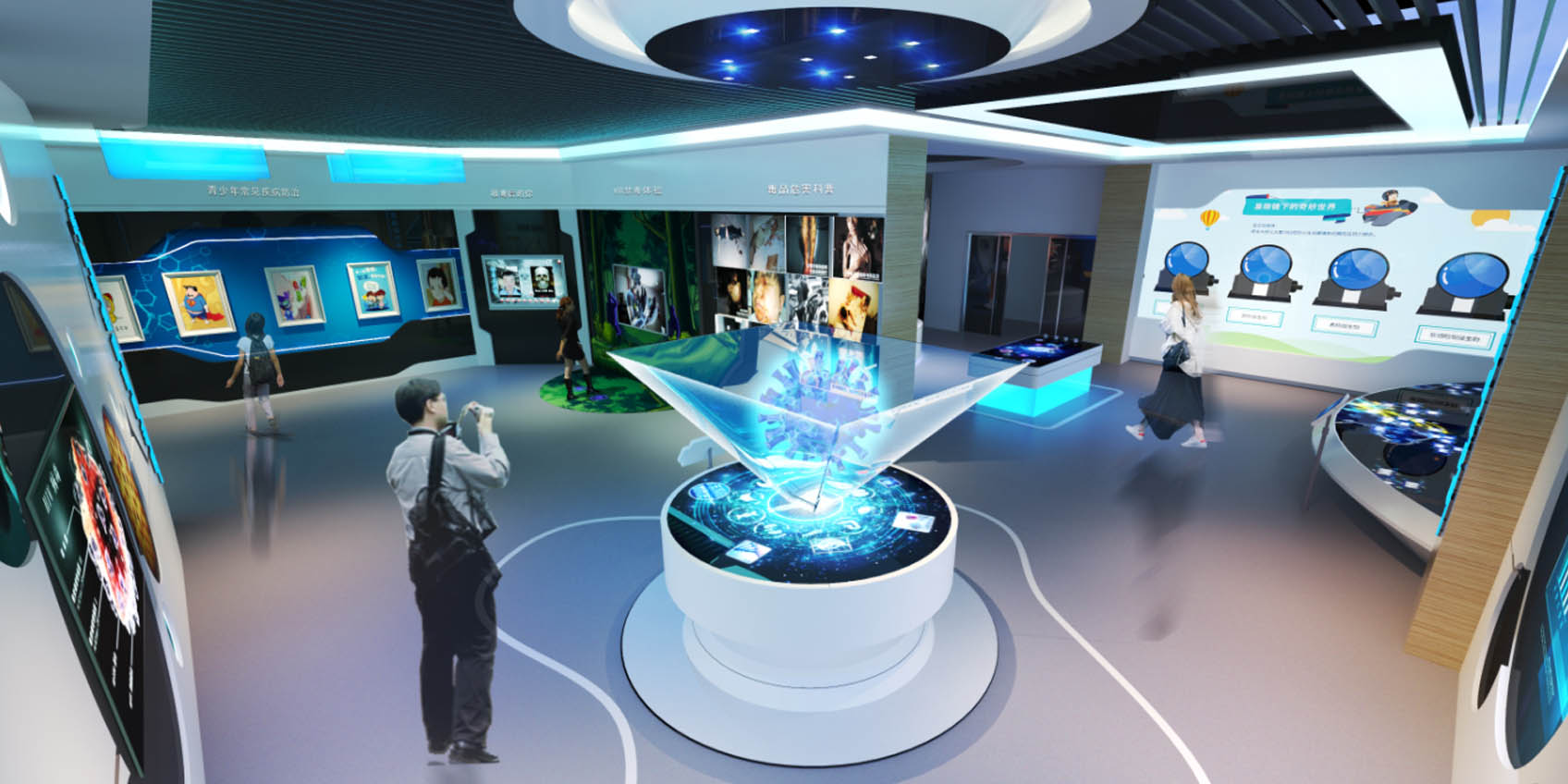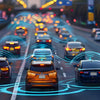3D Vision Systems: Revolutionizing Intelligent Perception & Precision

3D Vision Systems: Enhancing Machine Perception and Environmental Interaction
With advancements in Artificial Intelligence (AI), Machine Learning, Depth Sensing, and Computer Vision, 3D Vision Systems are becoming a key technology driving smart automation across multiple industries. Utilizing high-precision cameras, depth sensors (such as ToF sensors and LiDAR), and advanced data processing algorithms, 3D vision systems can accurately perceive an object's shape, position, size, and motion trajectory, improving machine perception and interaction with the environment.
3D vision technology is widely applied in smart manufacturing, autonomous driving, robotic navigation, quality inspection, medical imaging, AR/VR, and security surveillance, enabling devices to perform more precise measurements, recognition, and decision-making, ultimately enhancing automation levels and operational efficiency.
What is a 3D Vision System?
A 3D Vision System is a perception technology that utilizes depth sensors, stereo cameras, LiDAR (Light Detection and Ranging), Structured Light, and Time-of-Flight (ToF) sensors to capture an object’s three-dimensional information. It can detect an object’s shape, depth, dimensions, and spatial position and process this data using computer vision and AI algorithms to achieve object recognition, localization, measurement, and inspection.
Compared to traditional 2D vision systems, 3D vision provides more precise spatial data, making it particularly suitable for applications in smart manufacturing, autonomous driving, robotic guidance, medical imaging, and logistics automation. For example:
- Industrial robots use 3D vision for precise object gripping and automated assembly.
- Autonomous vehicles leverage 3D vision to sense road conditions and avoid obstacles.
- Smart warehouses utilize 3D scanning to optimize sorting and inventory management.
With the continuous development of AI, 5G, cloud computing, and edge computing, 3D vision systems are becoming a core technology driving automation and intelligence.

Core Technologies of 3D Vision Systems
1. Depth Sensing
Depth sensing is a fundamental capability of 3D vision systems, achieved through technologies such as:
- ToF (Time-of-Flight) sensors
- Stereo vision
- Structured light
- LiDAR (Light Detection and Ranging)
By integrating these technologies, 3D vision systems can achieve high-accuracy depth measurements (Depth Accuracy) and reconstruct 3D spatial information in complex environments.
For example, in autonomous driving, LiDAR combined with high-resolution cameras enables real-time environmental scanning, detecting obstacles with precise distance and shape measurements to ensure safe navigation.
2. High-Precision Object Recognition (Accuracy vs Precision)
The performance of a 3D vision system depends on accuracy and precision:
- Accuracy: The degree to which a measurement aligns with the true value.
- Precision: The consistency of repeated measurements, indicating the system’s repeatability.
In industrial inspection, 3D vision systems detect microscopic defects such as welding quality on electronic components or dimensional deviations in automotive parts, ensuring stable quality control in manufacturing processes.
3. Optimized Camera Field of View (FoV)
The Field of View (FoV) of 3D cameras impacts detection range and measurement precision. Based on application needs, cameras can be optimized with:
- Wide-angle lenses for covering larger areas (e.g., warehouse logistics).
- Narrow-angle lenses for detailed inspections (e.g., precision manufacturing).
For instance, automated sorting systems in warehouses use wide-FoV 3D cameras to detect various package sizes, improving efficiency, while precision measurement systems require narrow-FoV cameras to enhance scanning accuracy.

Applications of 3D Vision Systems
1. Smart Manufacturing and Automated Inspection
3D vision systems are extensively used in robotic guidance, quality control, assembly alignment, and dimensional measurement, helping industries enhance productivity, reduce costs, and achieve automation.
- Robotic Guidance (Robot Guidance): AI-powered 3D vision enables industrial robots to recognize object position, orientation, and shape, ensuring precise gripping, accurate assembly, and efficient automation.
- Automated Quality Inspection: 3D vision detects scratches, cracks, dents, color variations, and deformations, significantly reducing false detections compared to 2D inspection.
- Dimensional Measurement & Assembly Alignment: In aerospace, semiconductor manufacturing, and precision engineering, 3D vision systems provide sub-millimeter accuracy for high-precision component alignment.
2. Autonomous Driving and Intelligent Transportation
In autonomous vehicles, drones, and smart traffic management, 3D vision systems enhance environmental perception through:
- Real-time 3D mapping (3D Point Cloud Mapping)
- Obstacle detection and depth calculation
- Dynamic path planning and collision avoidance
For example, Tesla, Waymo, and Baidu Apollo integrate LiDAR, ToF, and AI algorithms to enhance navigation and safety.
3. Logistics and Warehouse Automation
3D vision systems optimize smart logistics and warehouse management by improving package sorting, inventory tracking, and robotic handling.
- Automated Sorting with 3D Scanning: AI-powered 3D scanning identifies package sizes, barcodes, and labels, improving sorting accuracy in e-commerce logistics.
- AGV & AMR Navigation: Autonomous Guided Vehicles (AGVs) and Autonomous Mobile Robots (AMRs) use 3D vision and SLAM (Simultaneous Localization and Mapping) for precise warehouse navigation.
- Smart Inventory Management: 3D vision monitors stock levels in real-time, reducing human error and optimizing supply chain efficiency.
4. Medical Imaging and Surgical Navigation
3D vision is revolutionizing healthcare by enhancing medical imaging, surgical navigation, and pathology detection.
- 3D Medical Imaging: AI-assisted CT, MRI, and ultrasound imaging provides high-resolution 3D reconstructions, improving disease diagnosis.
- Surgical Navigation: AR and AI-powered 3D visualization enhances precision in neurosurgery, orthopedics, and minimally invasive procedures.
- Robotic-Assisted Surgery: Systems like Da Vinci surgical robots use micro-scale precision for complex operations, improving patient outcomes.

Future Trends in 3D Vision Systems
1. AI + 3D Vision: Deep Learning for Smart Recognition
AI-powered 3D object recognition enhances security and automation, with applications in facial recognition, autonomous security surveillance, and defect detection.
2. Multi-Sensor Fusion (LiDAR + ToF + Thermal Imaging)
The next generation of 3D vision will integrate LiDAR, millimeter-wave radar, thermal imaging, and ToF sensors for more robust environmental perception.
For example:
- Autonomous Vehicles will combine 3D vision + LiDAR to improve performance in low-visibility conditions.
- Smart Industrial Inspection will use AI + multi-spectral imaging for ultra-precise defect detection.
3. High-Speed Real-Time Processing with 5G
With 5G and edge computing, 3D vision systems will achieve real-time data transmission and ultra-fast processing speeds, enabling low-latency applications in smart factories, logistics, and medical diagnostics.
Conclusion: 3D Vision Systems Driving Smart Automation
3D vision technology is revolutionizing industries from manufacturing, logistics, and autonomous driving to medical imaging, AR/VR, and security surveillance. As AI, depth sensing, 5G, and multi-sensor fusion continue to evolve, 3D vision systems will become even smarter, faster, and more precise, playing a crucial role in industrial automation, smart cities, and intelligent healthcare.
The future is here—3D vision is the key to smarter, more automated systems! 🚀




